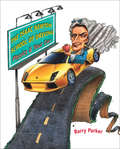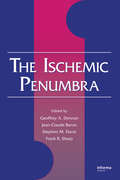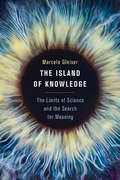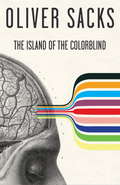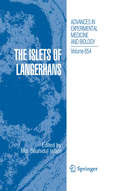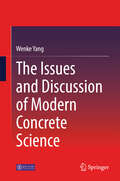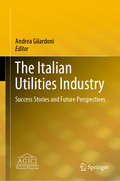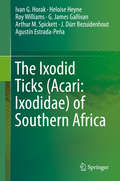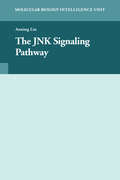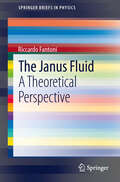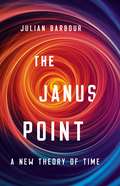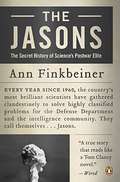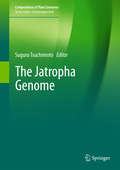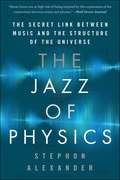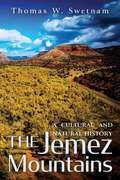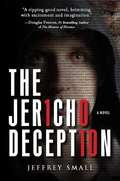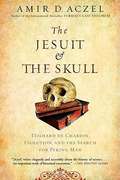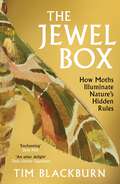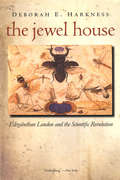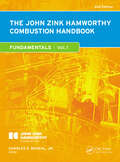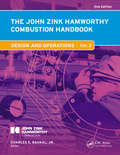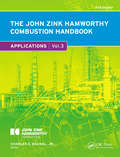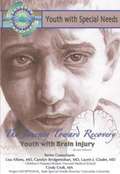- Table View
- List View
The Isaac Newton School of Driving: Physics and Your Car
by Barry ParkerFor some people, driving is an art; for others, it's a science. At the Isaac Newton School of Driving, though, every car is a laboratory on wheels and every drive an exciting journey into the world of physics. As explained by renowned science writer and physics professor Barry Parker—whose father was a car mechanic and garage owner—almost every aspect of driving involves physics. A car's performance and handling relies on fundamental concepts such as force, momentum, and energy. Its ignition system depends on the principles of electricity and magnetism. Braking relies on friction—yet another basic scientific concept—and if the brakes fail, the resulting damage, too, can be predicted using physics.Parker's first lesson describes the basic physics of driving: speed and acceleration; why you get thrown forward while braking or outward while turning; and why car advertisements boast about horsepower and torque. He goes on to discuss the thermodynamics of engines, and how they can be more fuel efficient; and what friction and traction are and how they keep a car's tires on the road, whether it's dry, wet, or icy. He also describes how simple laws of physics enable scientists to design aerodynamic cars and high-tech steering systems. Parker then explores the high-performance physics of auto racing, outlines how traffic accidents are reconstructed by police, uses chaos theory to explain why traffic jams happen, and describes what cars of the future might look like. Whether you drive a Pacer or a Porsche, The Isaac Newton School of Driving offers better—and better-informed—driving through physics.
The Ischemic Penumbra (Neurological Disease and Therapy)
by Anand AkhilaThe Ischemic Penumbra presents the current status of concepts and research on this topic and identifies the latest methods for clinicians to quickly and efficiently recognize viable cerebral tissue for enhanced stroke management. Focusing on state-of-the-science technologies and current trends, the book examines imaging strategies utilizing PET, SP
The Island of Knowledge: The Limits of Science and the Search for Meaning
by Marcelo GleiserWhy discovering the limits to science may be the most powerful discovery of all How much can we know about the world? In this book, physicist Marcelo Gleiser traces our search for answers to the most fundamental questions of existence, the origin of the universe, the nature of reality, and the limits of knowledge. In so doing, he reaches a provocative conclusion: science, like religion, is fundamentally limited as a tool for understanding the world. As science and its philosophical interpretations advance, we face the unsettling recognition of how much we don’t know. Gleiser shows that by abandoning the dualistic model that divides reality into the known and the unknown, we can embark on a third way based on the acceptance of our limitations. Only then, he argues, will we be truly able to experience freedom; for to be free in an age of science we cannot turn science into a god. Gleiser ultimately offers an uplifting exploration of humanity’s longing to conquer the unknown, and of science’s power to transform and inspire.
The Island of the Colorblind
by Oliver SacksOliver Sacks has always been fascinated by islands--their remoteness, their mystery, above all the unique forms of life they harbor. For him, islands conjure up equally the romance of Melville and Stevenson, the adventure of Magellan and Cook, and the scientific wonder of Darwin and Wallace. Drawn to the tiny Pacific atoll of Pingelap by intriguing reports of an isolated community of islanders born totally color-blind, Sacks finds himself setting up a clinic in a one-room island dispensary, where he listens to these achromatopic islanders describe their colorless world in rich terms of pattern and tone, luminance and shadow. And on Guam, where he goes to investigate the puzzling neurodegenerative paralysis endemic there for a century, he becomes, for a brief time, an island neurologist, making house calls with his colleague John Steele, amid crowing cockerels, cycad jungles, and the remains of a colonial culture. The islands reawaken Sacks' lifelong passion for botany--in particular, for the primitive cycad trees, whose existence dates back to the Paleozoic--and the cycads are the starting point for an intensely personal reflection on the meaning of islands, the dissemination of species, the genesis of disease, and the nature of deep geologic time. Out of an unexpected journey, Sacks has woven an unforgettable narrative which immerses us in the romance of island life, and shares his own compelling vision of the complexities of being human.
The Island of the Colorblind
by Oliver SacksOliver Sacks has always been fascinated by islands--their remoteness, their mystery, above all the unique forms of life they harbor. For him, islands conjure up equally the romance of Melville and Stevenson, the adventure of Magellan and Cook, and the scientific wonder of Darwin and Wallace.Drawn to the tiny Pacific atoll of Pingelap by intriguing reports of an isolated community of islanders born totally color-blind, Sacks finds himself setting up a clinic in a one-room island dispensary, where he listens to these achromatopic islanders describe their colorless world in rich terms of pattern and tone, luminance and shadow. And on Guam, where he goes to investigate the puzzling neurodegenerative paralysis endemic there for a century, he becomes, for a brief time, an island neurologist, making house calls with his colleague John Steele, amid crowing cockerels, cycad jungles, and the remains of a colonial culture.The islands reawaken Sacks's lifelong passion for botany--in particular, for the primitive cycad trees, whose existence dates back to the Paleozoic--and the cycads are the starting point for an intensely personal reflection on the meaning of islands, the dissemination of species, the genesis of disease, and the nature of deep geologic time. Out of an unexpected journey, Sacks has woven an unforgettable narrative which immerses us in the romance of island life, and shares his own compelling vision of the complexities of being human.From the Hardcover edition.
The Islets of Langerhans
by Md. Shahidul IslamThis book is a unique and thoughtful blend of critical background information and advances made in a multitude of areas of contemporary islet research. It is an essential reference book, the first of its kind in many years, for professionals as well as for the beginners interested in the study of islet physiology and diabetes. The book is unique in its breadth: it deals with anatomy, histology, ultra-structure, evolution and comparative anatomy, imaging, developmental biology, programming, apoptosis, mitochondrial function, metabolism, cellular signaling, electrophysiology, oscillation of hormone secretion, islets of model animals, immunology, proteomics, regenerative medicine, clinical advances, islet transplantation, and finally islet tumors. Individual chapters contributed by over a hundred experts and enthusiasts, not only provide a balanced view of the recent advances made in the respective fields, but also provide directions and thoughts for future research. Thanks to vivid and colorful illustrations, tables and sketches, the book as a whole, and the individual chapters make reading a pleasant experience. It is a valuable compilation that one would love to possess personally and buy as a present to a colleague.
The Isogeometric Boundary Element Method (Lecture Notes in Applied and Computational Mechanics #90)
by Gernot Beer Benjamin Marussig Christian DuenserThis book discusses the introduction of isogeometric technology to the boundary element method (BEM) in order to establish an improved link between simulation and computer aided design (CAD) that does not require mesh generation. In the isogeometric BEM, non-uniform rational B-splines replace the Lagrange polynomials used in conventional BEM. This may seem a trivial exercise, but if implemented rigorously, it has profound implications for the programming, resulting in software that is extremely user friendly and efficient. The BEM is ideally suited for linking with CAD, as both rely on the definition of objects by boundary representation. The book shows how the isogeometric philosophy can be implemented and how its benefits can be maximised with a minimum of user effort. Using several examples, ranging from potential problems to elasticity, it demonstrates that the isogeometric approach results in a drastic reduction in the number of unknowns and an increase in the quality of the results. In some cases even exact solutions without refinement are possible. The book also presents a number of practical applications, demonstrating that the development is not only of academic interest. It then elegantly addresses heterogeneous and non-linear problems using isogeometric concepts, and tests them on several examples, including a severely non-linear problem in viscous flow. The book makes a significant contribution towards a seamless integration of CAD and simulation, which eliminates the need for tedious mesh generation and provides high-quality results with minimum user intervention and computing.
The Issues and Discussion of Modern Concrete Science
by Wenke YangThis book is devoted to two primary objectives. The first is to present the errors, inadaptability, and mistakes arising when the current theory on concrete is applied to explaining practical construction of concrete; the second is to put forward viewpoints in modern concrete science.Taking a number of engineering cases as examples, we experimentally studied and theoretically analyzed the errors, inadaptability, and mistakes when the current theory on concrete is applied to explaining practical construction of concrete. Moreover, we investigated the use of mixing ratios, aggregates, cement, high-performance concrete and fibers, as well as the frost resistance, cracking behavior, durability, dry shrinkage and autogenous healing to address and remedy the shortcomings in today’s concrete science, put forward new proposals, and make a number of innovative achievements in the field, particularly in modern theory on concrete science. The results and topics which will be of particular interest to engineers and researchers include: corrections to several one-sided, even mistaken views on concrete construction in the field and a new theory that can be adopted to improve the durability of concrete projects, to control and improve the implementation quality of concrete projects, and to guide teaching in universities. Wenke Yang is a distinguished senior engineer at China Airport Construction Group Corporation, General Administration of Civil Aviation of China (CAAC).
The Italian Utilities Industry: Success Stories and Future Perspectives
by Andrea GilardoniThis book addresses the fundamental changes that the Italian public utilities sector has undergone in the last two decades. Since the late 1990s, liberalisation and privatisation have replaced state-owned monopolies at both the national and local level, new technologies have created a broad range of new opportunities for power generation and distribution, and a redesigned public policy agenda has brought to the fore a whole set of new priorities. In this fast-changing environment, firms have redrawn their strategies, redesigned their business architectures and models, invested in infrastructure and R&D, taken advantage of growth opportunities at home and abroad, opened up their ownership structure, revised their offerings, and developed a new approach to customers. As a result, a radically altered market structure has emerged. As the sector tackles the overriding challenge of sustainability and energy transition, the book takes stock of such past and ongoing developments through the direct testimonies of various stakeholders: the companies in the energy, water, and waste management sectors that are at the forefront of this sweeping transformation; regulators; financial partners; and management consulting firms. The diversity of perspectives and wealth of information presented make this book a valuable resource for anyone wanting to grasp the direction, intensity and causes of change, as well as the nature of the challenges that lie ahead. This work has been prepared as part of the research activities of the Observatory on Alliances and Strategies in the Pan-European Utility Market, one of Agici’s Research and Advisory units.
The Ixodid Ticks (Acari: Ixodidae) of Southern Africa
by Agustín Estrada-Peña Roy Williams Ivan G. Horak Heloise Heyne G. James Gallivan Arthur M. Spickett J. Dürr BezuidenhoutThis is a comprehensive work summarizing the current state of knowledge of the biology of the hard ticks (Acari: Ixodidae) of Southern Africa (South Africa, Namibia, Botswana, Swaziland, Lesotho and Maputo Province, Mozambique). It provides an overview of the history of tick research in Southern Africa and the evolution of our knowledge of the ticks’ distribution and biology, as well as the methods used to determine tick distribution, abundance and host preference. The morphologies of most of the tick species known to occur in Southern Africa are described and illustrated, and their distributions are described and mapped in relation to the biomes of the region. The known hosts for each tick species are listed, and the tick’s host preferences are discussed. Information on most species life cycle in the laboratory and the field, and their seasonal occurrence, is summarized. The diseases of animals and humans transmitted or caused by each tick species are summarized in relation to tick ecology. Aspects of the biology of the major hosts relevant to tick infestations are described, and extensive tick/host and host/tick lists are provided for each country
The JNK Signaling Pathway
by Anning LinSignal transduction is one of the most exciting research areas in modern biology as it deals with how information flows from the extracellular environment into a living cell to change its metabolism, genotype and phenotype. With the completion of the genomes of human and several other species, it becomes even more important to elucidate the molecul
The Janus Fluid
by Riccardo FantoniThe state-of-the-art in the theoretical statistical physics treatment of the Janus fluid is reported with a bridge between new research results published in journal articles and a contextual literature review. Recent Monte Carlo simulations on the Kern and Frenkel model of the Janus fluid have revealed that in the vapor phase, below the critical point, there is the formation of preferred inert clusters made up of a well-defined number of particles: the micelles and the vesicles. This is responsible for a re-entrant gas branch of the gas-liquid binodal. Detailed account of this findings are given in the first chapter where the Janus fluid is introduced as a product of new sophisticated synthesis laboratory techniques. In the second chapter a cluster theory is developed to approximate the exact clustering properties stemming from the simulations. It is shown that the theory is able to reproduce semi-quantitatively the micellization phenomenon.
The Janus Point: A New Theory of Time
by Julian BarbourIn a universe filled by chaos and disorder, one physicist makes the radical argument that the growth of order drives the passage of time -- and shapes the destiny of the universe. Time is among the universe's greatest mysteries. Why, when most laws of physics allow for it to flow forward and backward, does it only go forward? Physicists have long appealed to the second law of thermodynamics, held to predict the increase of disorder in the universe, to explain this. In The Janus Point, physicist Julian Barbour argues that the second law has been misapplied and that the growth of order determines how we experience time. In his view, the big bang becomes the "Janus point," a moment of minimal order from which time could flow, and order increase, in two directions. The Janus Point has remarkable implications: while most physicists predict that the universe will become mired in disorder, Barbour sees the possibility that order -- the stuff of life -- can grow without bound. A major new work of physics, The Janus Point will transform our understanding of the nature of existence.
The Jasons
by Ann FinkbeinerThe Jasons are a well-guarded group of world-class scientists, briefly outed in the Pentagon Papers during the Vietnam War, who have been meeting every summer since 1960 to tackle classified problems that the Defense Department cannot solve. Among many stunning innovations, they helped invent our electronic battlefield and Star Wars missile defense technology, and are now looking into ways to improve our intelligence gathering. Recounting the unknown story of these brilliant, stubbornly independent thinkers, Ann Finkbeiner takes advantage of her unprecedented access to this elite group to explore the uncertain bargains between science and politics. It is a story older than Faust and as timely as tomorrow’s headlines. .
The Jatropha Genome
by Suguru TsuchimotoThis book presents the genetics and genomics of Jatropha, which is used for biofuel, and shows how plant genomics can be used to improve plant breeding. The utilization of plant biofuels is a promising solution to global issues such as the depletion of fossil fuels and resources and climate change. Jatropha curcas L. (jatropha) is a species of shrub belonging to the Euphorbiaceae family. Native to Mesoamerica, it is now grown widely in tropical and subtropical areas in America, Africa and Asia. The seed oil of Jatropha is a suitable source for biodiesel or bio jet fuel, and since it is not edible and can grow in semi-arid lands unsuitable for the cultivation of food crops, its production does not compete with that of food to inflate its price. The characteristics of this promising biofuel plant, however, have not been fully exploited in terms of breeding, mainly because of the lack of information on its genetics and genomics. The structure of the whole genome of Jatropha is analyzed, providing insights into on the plant's genetic system and accelerating the molecular breeding process.
The Jazz of Physics: The Secret Link Between Music and the Structure of the Universe
by Stephon AlexanderMore than fifty years ago, John Coltrane drew the twelve musical notes in a circle and connected them by straight lines, forming a five-pointed star. Inspired by Einstein, Coltrane put physics and geometry at the core of his music. Physicist and jazz musician Stephon Alexander follows suit, using jazz to answer physics' most vexing questions about the past and future of the universe. Following the great minds that first drew the links between music and physics-a list including Pythagoras, Kepler, Newton, Einstein, and Rakim-The Jazz of Physics reveals that the ancient poetic idea of the Music of the Spheres," taken seriously, clarifies confounding issues in physics. The Jazz of Physics will fascinate and inspire anyone interested in the mysteries of our universe, music, and life itself.
The Jemez Mountains: A Cultural and Natural History
by Thomas W. SwetnamThe Jemez Mountains are a quintessential New Mexico landscape. For centuries, Pueblo, Spanish, and Anglo cultures have mixed and melded here. Many ancient villages are scattered across the mesas and in the canyons below the Valles Caldera, the crater of a giant, slumbering volcano. The rocks and trees of this landscape tell tales of eruptions, lava flows, droughts, floods, forest fires, and hot springs damming a river. Stories abound of battles for land and water between conquistadores, pueblos, and priests, and of farming and sheep herding disrupted by raiders and rustlers. In the modern era, forest rangers, scientists, and hippies have played an important role in shaping the area. In forty brief chapters, this book recounts some of these fascinating stories, accompanied by more than a hundred photographs, maps, and drawings. Matched photographs of the same views taken up to 150 years apart attest to striking change and apparent stasis. Major alterations have occurred in some places over the past two centuries due to human activity, and increasing climate change threatens further transformation. For those new to the Jemez Mountains, these stories and images will provide an introduction to the cultural and natural history of the area. Residents and long-time aficionados of the Jemez will find both familiar and surprising stories and will gain a renewed sense of this magnificent place.
The Jericho Deception
by Jeffrey SmallAt the intersection of science and spirituality lies the human mind.The Jericho Deception is a psychological adventure into the interplay of mind and spirit, science and religion, mystery and mysticism. A mysterious death in a Yale lab, a secret facility hidden in the Egyptian desert, a desperate chase through the ruins of pharaohs: all linked together by a psychological experiment that promises to expose the innermost workings of the human mind and soul. Ignoring the skepticism of his Yale colleagues, neuro-psychologist Dr. Ethan Lightman has dedicated his professional career to developing the Logos, a device that induces mystical experiences of the divine in his subjects through the use of electro-magnetic brain stimulation. After the mysterious death of his mentor in their Yale lab, Ethan is suspended from his research and teaching duties. Distraught, he uncovers a coded message written by his mentor on the night of his death that leads him to discover that the foundation funding their Logos project is a covert front for the CIA. Questioning his future, Ethan jumps at a cryptic invitation from the foundation's head to meet in person. He boards a private plane that whisks him to a remote desert in Egypt where he is brought to The Monastery, a secret religious training camp run by the CIA. Ethan is shocked to learn that the CIA is using his device, the Logos, to reprogram Islamic fundamentalists into Christians in a covert operation they refer to as Project Jericho. Asked to fix a flaw in the Logos that turns certain subjects psychotic, Ethan must decide whether to continue research that could plunge the Middle East into a religious war if it is discovered or to give up on his life's work and possibly his own life.Ethan makes his fateful decision after he befriends a Muslim doctor, falsely imprisoned as a suspected terrorist. Their escape leads to a harrowing chase through a Bedouin desert camp in the dead of night, a violent confrontation with his mentor's murderer in the majestic ruins of an ancient temple in Luxor, and a final resolution with the deputy director of the CIA's covert operations in bustling market in Cairo. Along the way, Ethan discovers that the Logos also holds the key to understanding a mysterious mystical experience he has suppressed from his past.
The Jesuit and the Skull
by Amir AczelFrom the New York Times bestselling author of Fermat's Last Theorem, "an extraordinary story"( Philadelphia Inquirer) of discovery, evolution, science, and faith. In 1929, French Jesuit priest Pierre Teilhard de Chardin was a part of a group of scientists that uncovered a skull that became known as Peking Man, a key evolutionary link that left Teilhard torn between science and his ancient faith, and would leave him ostracized by his beloved Catholic Church. His struggle is at the heart of The Jesuit and the Skull, which takes readers across continents and cultures in a fascinating exploration of one of the twentieth century's most important discoveries, and one of the world's most provocative pieces of evidence in the roiling debate between creationism and evolution.
The Jewel Box: How Moths Illuminate Nature’s Hidden Rules
by Tim BlackburnEvery morning, ecologist Tim Blackburn is inspired by the diversity contained within the moth trap he runs on the roof of his London flat. Beautiful, ineffably mysterious organisms, these moths offer a glimpse into a larger order, one that extends beyond individual species, beyond lepidoptera or insects, and into a hidden landscape. Footmen, whose populations are on the march as their lichen food recovers from decades of industrial pollution. The Goat Moth, a thumb-sized broken stick mimic, that takes several years to mature deep in the wood of tree trunks. The Oak Eggar, with the look of a bemused Honey Monster, host to a large wasp that eats its caterpillars alive from the inside. The Uncertain, whose similarity to other species has motivated its English name. The Silver Y, with a weight measured in milligrams, but capable of migrating across a continent. A moth trap is a magical contraption, conjuring these and hundreds of other insect jewels out of the darkness. Just as iron filings arrange themselves to articulate a magnetic field that would otherwise be invisible, Blackburn shows us that when we pay proper attention to these tiny animals, their relationships with one another and their connections to the wider web of life, a greater truth about the world gradually emerges. In THE JEWEL BOX, he reflects on what he has learned in thirty years of work as a scientist studying ecosystems, and demonstrates how the contents of one small box can illuminate the workings of all nature.
The Jewel House: Elizabethan London and the Scientific Revolution
by Deborah E. HarknessThe #1 New York Times–bestselling author of A Discovery of Witchesexamines the real-life history of the scientific community of Elizabethan London.Travel to the streets, shops, back alleys, and gardens of Elizabethan London, where a boisterous and diverse group of men and women shared a keen interest in the study of nature. These assorted merchants, gardeners, barber-surgeons, midwives, instrument makers, mathematics teachers, engineers, alchemists, and other experimenters formed a patchwork scientific community whose practices set the stage for the Scientific Revolution. While Francis Bacon has been widely regarded as the father of modern science, scores of his London contemporaries also deserve a share in this distinction. It was their collaborative, yet often contentious, ethos that helped to develop the ideals of modern scientific research.The book examines six particularly fascinating episodes of scientific inquiry and dispute in sixteenth-century London, bringing to life the individuals involved and the challenges they faced. These men and women experimented and invented, argued and competed, waged wars in the press, and struggled to understand the complexities of the natural world. Together their stories illuminate the blind alleys and surprising twists and turns taken as medieval philosophy gave way to the empirical, experimental culture that became a hallmark of the Scientific Revolution.&“Elegant and erudite.&” —Anthony Grafton, American Scientist&“A truly wonderful book, deeply researched, full of original material, and exhilarating to read.&” —John Carey, Sunday Times &“Widely accessible.&” —Ian Archer, Oxford University &“Vivid, compelling, and panoramic, this revelatory work will force us to revise everything we thought we knew about Renaissance science.&” —Adrian Johns, author of The Nature Book
The John Zink Hamworthy Combustion Handbook: Volume 1 - Fundamentals (Industrial Combustion)
by Charles E. BaukalDespite the length of time it has been around, its importance, and vast amounts of research, combustion is still far from being completely understood. Environmental, cost, and fuel consumption issues add further complexity, particularly in the process and power generation industries. Dedicated to advancing the art and science of industrial combusti
The John Zink Hamworthy Combustion Handbook: Volume 2 Design and Operations (Industrial Combustion)
by Charles E. Baukal.Despite the length of time it has been around, its importance, and vast amounts of research, combustion is still far from being completely understood. Issues regarding the environment, cost, and fuel consumption add further complexity, particularly in the process and power generation industries. Dedicated to advancing the art and science of industr
The John Zink Hamworthy Combustion Handbook: Volume 3 Applications (Industrial Combustion)
by Charles E. BaukalDespite the length of time it has been around, its importance, and vast amounts of research, combustion is still far from being completely understood. Issues regarding the environment, cost, and fuel consumption add further complexity, particularly in the process and power generation industries. Dedicated to advancing the art and science of industr
The Journey Toward Recovery: Youth with Brain Injury (Youth with Special Needs)
by Joan EsherickJerome pedaled down the mountain, his friends Tommy and Eric racing to catch up. The wide, flat path was made for smooth riding, but Jerome's mind wasn't on the trail. A sudden rustling in the brush ahead startled him out of his daydreaming. A dog darted out of the shrubs, then stopped dead in the trail. The next several seconds seemed to pass in slow motion. Jerome squeezed hard on the hand brakes, but it was too late. His front wheel collided with the animal; the dog yelped; and Jerome somersaulted over his handlebars. Tommy said later he would never forget how his friend flew through the air and collided head-on with the sycamore tree. Eric said he'd never forget the sickening thud the impact made. But what his friends would never forget, Jerome would never remember. In a brilliant white flash, Jerome's life as he knew it was gone. What do bikes, cars, scooters, sports, tumors, strokes, guns, and the shaking of babies all have in common? They all can cause brain injuries. Every twenty-one seconds, one person in the United States sustains a traumatic brain injury. In The Journey Toward Recovery: Youth with Brain Injury you will read about Jerome, one teen who finds his life changed forever in a split-second accident. Along the way, you will also learn about other forms of brain injury; how these injuries affect people's lives; and how schools, doctors, and lawmakers are helping youth with this form of special need.
